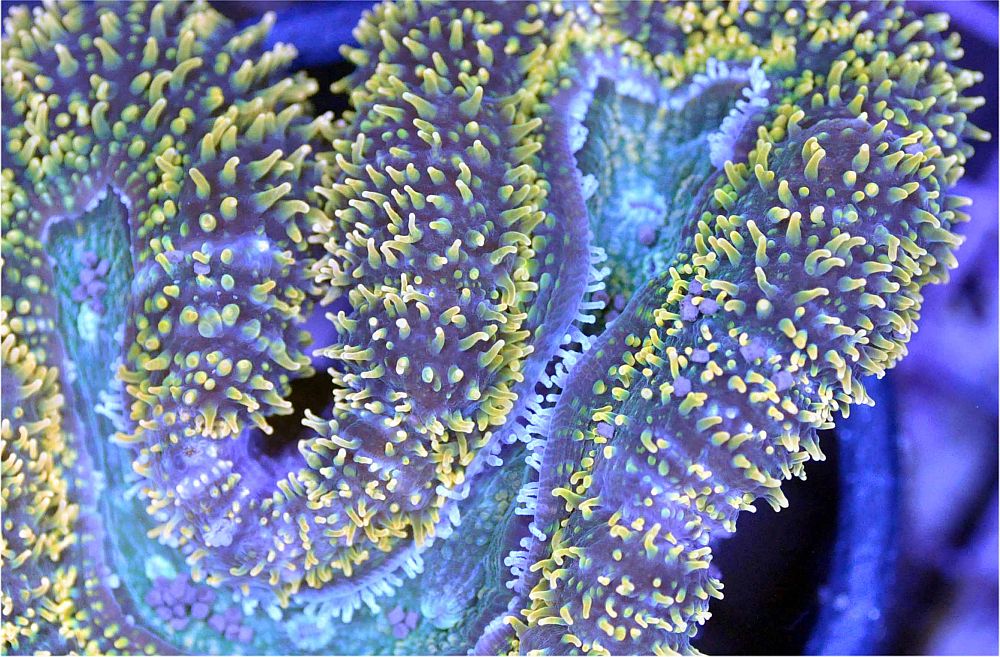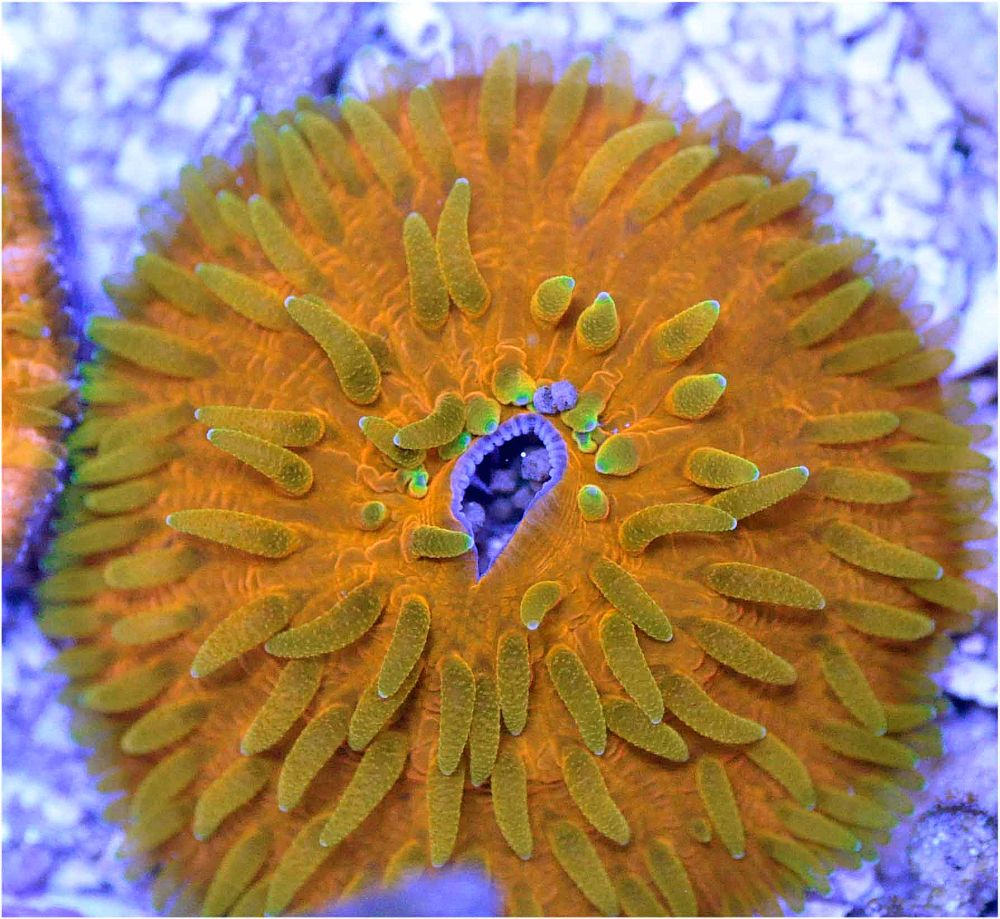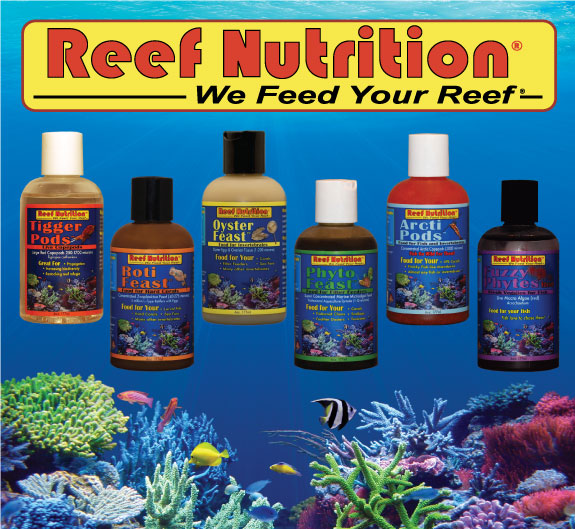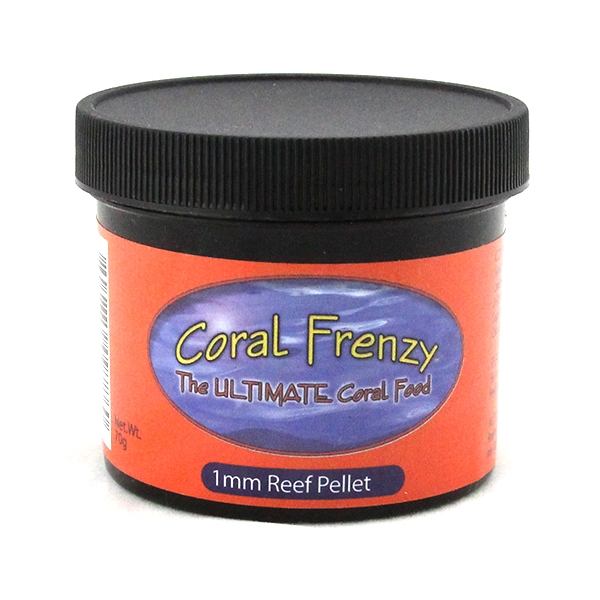Our Coral Husbandry Specialist Amanda wrote up her feeding regimen here at Aqua SD. Thought I'd share with everyone here, hope it helps some people out on what to feed for the corals needs!
To keep our corals healthy and colors vibrant we feed our corals 2-3 times a week or as needed (for example, NPS corals). We have had great success with the following 3-part feeding regimen for our corals:
1. All of our systems are first dosed with Red Sea’s Reef Energy Part A & B. Since we started the Reef Energy system we have noticed tremendous color enhancement in our SPS corals, making us a strong believer in the product. The dosing of Reef Energy also prepares our corals for the acceptance of food in the next step.
2. Next, all of our systems are dosed with a mixture of Reef Nutrition’s Oyster and Phytofeast with a small amount of Coral Frenzy (powdered form) mixed in. This is then diluted with water from our systems and then broadcast fed to our corals. Particular corals that are targeted with a turkey baster during this feeding step include gorgonians, alveaporas, and gonioporas. The “smell†of the food helps entice larger LPS corals to open up and accept food during the third step of the feeding process.
3. The final step is the most time consuming but gets the best results. All the flow is turned off in our tanks and the LPS corals are individually fed Coral Frenzy pellets. The pellets are placed in a small cup with tank water with a small amount of the Coral Frenzy powder mixed in then fed with a turkey baster (smaller opening is better, otherwise the pellets will just roll out). We find that this mixture works well so that the LPS corals that aren’t fully open during the third step can still catch food. We prefer the .5 mm pellets for LPS corals with small mouths (acans, chalices, leptos) while the 1 mm pellets work well for larger LPS corals (lobos, wellsos, etc). We use this particular LPS coral food in that the corals react to it much faster than other forms of food (mysis, enriched brine, small pieces of silverside, etc) which means that our coral will actually consume the food presented and will eat it before the fish are likely to eat it instead. The pumps are usually left off for around 15 minutes and any excess food is removed from the corals to prevent “choking†or the food rotting atop the coral.





Company description of the products:

• Red Sea Energy Part A
A unique formulation of carbohydrates, amino acids, fatty acids, and suspended protein flocks available for direct consumption and absorption. This easily digestible and highly nutritious Dissolved Organic Matter complex also stimulates polyp and soft tissue extension, helping corals optimize nutrient consumption by expanding surface area for absorption.
• Red Sea Energy Part B
A highly concentrated complex of vitamins and amino acids found to be the limiting factors in the nutritional demands of corals and other invertebrates. All of the components of Reef Energy B come from marine sources and are emulsified in a unique medium that enhances their solubility and absorption of the vitamins and acids by corals.

• Reef Nutrition Oysterfeast
A mix of both oyster eggs and ovarian tissue (1-200 microns). Oyster-Feast is naturally size-appropriate for the smallest SPS corals (Acropora & Montipora) up to LPS corals (Goniopora & Favites). Highly suitable feed for a broad range of corals and other invertebrates.
• Reef Nutrition Pytofeast
(1-15 microns) A blend of the most important marine microalgae, those chosen by universities and hatcheries for their superior nutritional value: Pavlova, Isochrysis, Thalassiosira weissflogii, Tetraselmis, Nannochloropsis, and Synechococcus.
You can refer to Reef Nutrition’s feeding chart to decide which is better suited for your livesock.

• Coral Frenzy: The Ultimate Coral Food
53-1700 microns. CORAL FRENZY is an excellent food for your small fish, corals, and filter feeders.
Also available in 1mm and 0.5mm pellets.


**Like with any new additive, it is always recommended to follow the directions and monitor your water quality.
To keep our corals healthy and colors vibrant we feed our corals 2-3 times a week or as needed (for example, NPS corals). We have had great success with the following 3-part feeding regimen for our corals:
1. All of our systems are first dosed with Red Sea’s Reef Energy Part A & B. Since we started the Reef Energy system we have noticed tremendous color enhancement in our SPS corals, making us a strong believer in the product. The dosing of Reef Energy also prepares our corals for the acceptance of food in the next step.
2. Next, all of our systems are dosed with a mixture of Reef Nutrition’s Oyster and Phytofeast with a small amount of Coral Frenzy (powdered form) mixed in. This is then diluted with water from our systems and then broadcast fed to our corals. Particular corals that are targeted with a turkey baster during this feeding step include gorgonians, alveaporas, and gonioporas. The “smell†of the food helps entice larger LPS corals to open up and accept food during the third step of the feeding process.
3. The final step is the most time consuming but gets the best results. All the flow is turned off in our tanks and the LPS corals are individually fed Coral Frenzy pellets. The pellets are placed in a small cup with tank water with a small amount of the Coral Frenzy powder mixed in then fed with a turkey baster (smaller opening is better, otherwise the pellets will just roll out). We find that this mixture works well so that the LPS corals that aren’t fully open during the third step can still catch food. We prefer the .5 mm pellets for LPS corals with small mouths (acans, chalices, leptos) while the 1 mm pellets work well for larger LPS corals (lobos, wellsos, etc). We use this particular LPS coral food in that the corals react to it much faster than other forms of food (mysis, enriched brine, small pieces of silverside, etc) which means that our coral will actually consume the food presented and will eat it before the fish are likely to eat it instead. The pumps are usually left off for around 15 minutes and any excess food is removed from the corals to prevent “choking†or the food rotting atop the coral.





Company description of the products:

• Red Sea Energy Part A
A unique formulation of carbohydrates, amino acids, fatty acids, and suspended protein flocks available for direct consumption and absorption. This easily digestible and highly nutritious Dissolved Organic Matter complex also stimulates polyp and soft tissue extension, helping corals optimize nutrient consumption by expanding surface area for absorption.
• Red Sea Energy Part B
A highly concentrated complex of vitamins and amino acids found to be the limiting factors in the nutritional demands of corals and other invertebrates. All of the components of Reef Energy B come from marine sources and are emulsified in a unique medium that enhances their solubility and absorption of the vitamins and acids by corals.

• Reef Nutrition Oysterfeast
A mix of both oyster eggs and ovarian tissue (1-200 microns). Oyster-Feast is naturally size-appropriate for the smallest SPS corals (Acropora & Montipora) up to LPS corals (Goniopora & Favites). Highly suitable feed for a broad range of corals and other invertebrates.
• Reef Nutrition Pytofeast
(1-15 microns) A blend of the most important marine microalgae, those chosen by universities and hatcheries for their superior nutritional value: Pavlova, Isochrysis, Thalassiosira weissflogii, Tetraselmis, Nannochloropsis, and Synechococcus.
You can refer to Reef Nutrition’s feeding chart to decide which is better suited for your livesock.

• Coral Frenzy: The Ultimate Coral Food
53-1700 microns. CORAL FRENZY is an excellent food for your small fish, corals, and filter feeders.
Also available in 1mm and 0.5mm pellets.


**Like with any new additive, it is always recommended to follow the directions and monitor your water quality.









